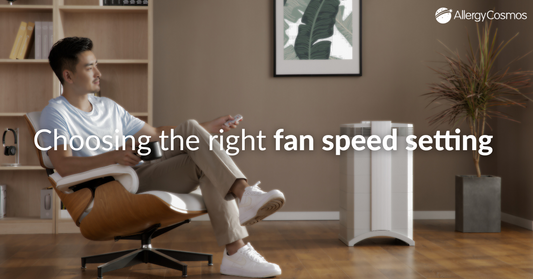The pollen season is in full bloom and for some of you, thoughts are turning to home improvements and spring cleaning! A few days is all you need to start allergy-proofing your home and deal with any indoor air quality issues that can severely affect your family's allergy symptoms this year. To practice the best allergy spring cleaning - and general allergen avoidance - we've come up with a few ideas in the area of dusting, carpets and paint/VOCs.
- Dust & Dust Mite Allergens. If you suffer with asthma or another allergy, dust is one of your biggest enemies and should get special attention during your allergy spring cleaning. The main component of dust is dead skin scales, which is food for house dust mites. Therefore, dust also contains dust mites and it's droppings - which can cause severe allergic reactions. Other ingredients of dust include moulds, pollution particles and pet dander - a very potent mixture of allergens. Dust tends to accumulate in the most heavily used parts of your house such as beds, carpets and furniture upholstered with fabric. If you normally only have time to flick a duster over the main surfaces, a spring cleaning day is the ideal opportunity to tackle dust in other areas. Never use a feather duster, because it just stirs up dust and the allergens in it, rather than removing it. Damp-dusting is best, with a cloth - you might want to make the job easier with a dust-attracting, or electrostatic, cloth. Alternatively, suck dust away with an allergy vacuum cleaner (here you want to make sure to use a leakage free HEPA vacuum cleaner). While you’re at it, think about how you could cut down on your dusting for good. There are two ways to do that. Either remove clutter - which only collects dust - from your room, or use a high quality allergy air purifier. Get rid of any unused furniture, like chairs, or tables, and minimise the number of ornaments, books and other bits and bobs that are out on display. You might be pleasantly surprised by how spacious your room now appears! The right home air purifier and the right set up for the air purifier can enable you to reduce up to 95% of the dust in your home. Ideally do both - remove clutter to make room for an air purifier.
- Cleaning allergens out of your carpet. How many years have you had your carpets? The older it is, the more dirt there will be trapped in its fibres. Apparently a carpet can hold eight times its own weight in dust (including house dust mites & dust mite remains), outside dirt such as car exhausts, pollen, mould and so on. A good going over with a leakage free vacuum fitted with a HEPA filter will improve and refresh your carpet and is essential for your allergy spring cleaning, but you might get an even better result by investing in a deep steam clean, which will kill off house dust mites and bacteria. For keeping allergens under control, you should use allergy and asthma friendly cleaning products such as the Allersearch allergen neutralizers on a regular basis. The X-Mite Dry Powder Carpet Cleaner is very effective in eradicating dust mites and other allergens and is easy to use. You might also want to consider replacing carpets, with a hard surface flooring which will be easier to clean and will not accumulate as much dust. Suitable alternatives to carpet include hardwood, ceramic tiles, linoleum or vinyl.
- Chemicals & gases. There’s nothing like a lick of fresh paint to set off your spring cleaning efforts. Painted walls attract less dust than walls covered with wallpaper, so this might be a good change to make to cut down the allergy-provoking potential of a room. Choose your paint with care, though. Many paints contain Volatile Organic Compounds (VOCs). Paints are either water-based or oil-based. The latter tend to have a higher VOC content. Water-based paints are used for walls and oil-based for woodwork. Solvents, which are VOCs, are used in paints to thin the oil content and make the paint easier to apply to a surface. As the paint dries, the VOC content evaporates and should not be inhaled by anyone, but it is especially harmful for people with Multiple Chemical Sensitivity or allergies. It may be best to look out for allergy-friendly products and make use of a VOC air purifier.




